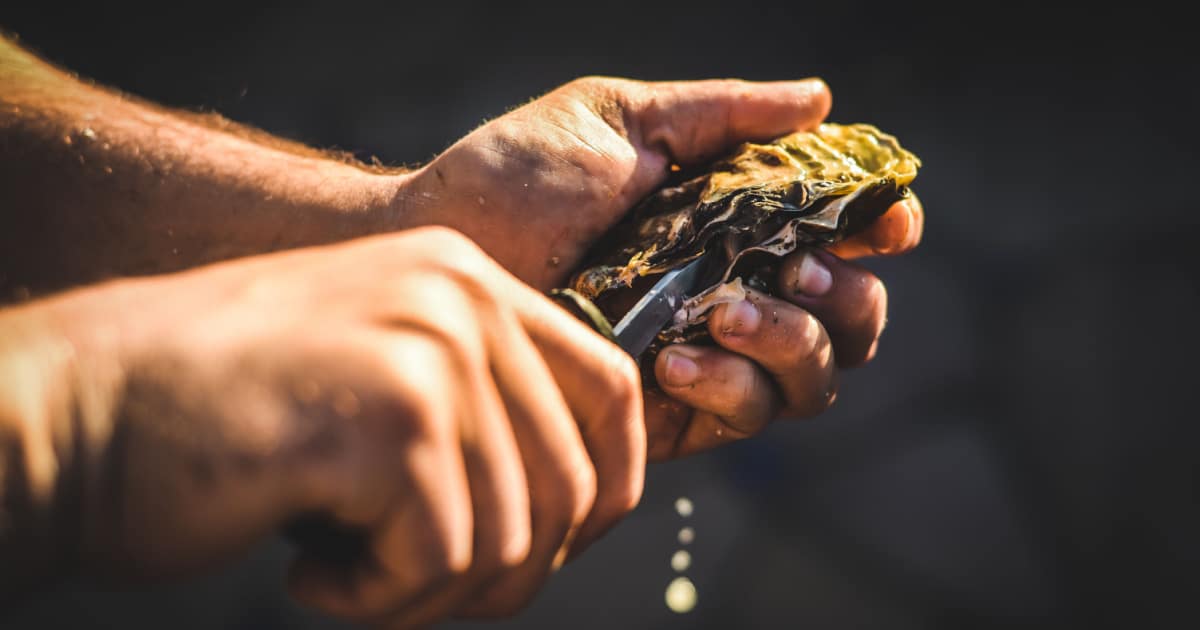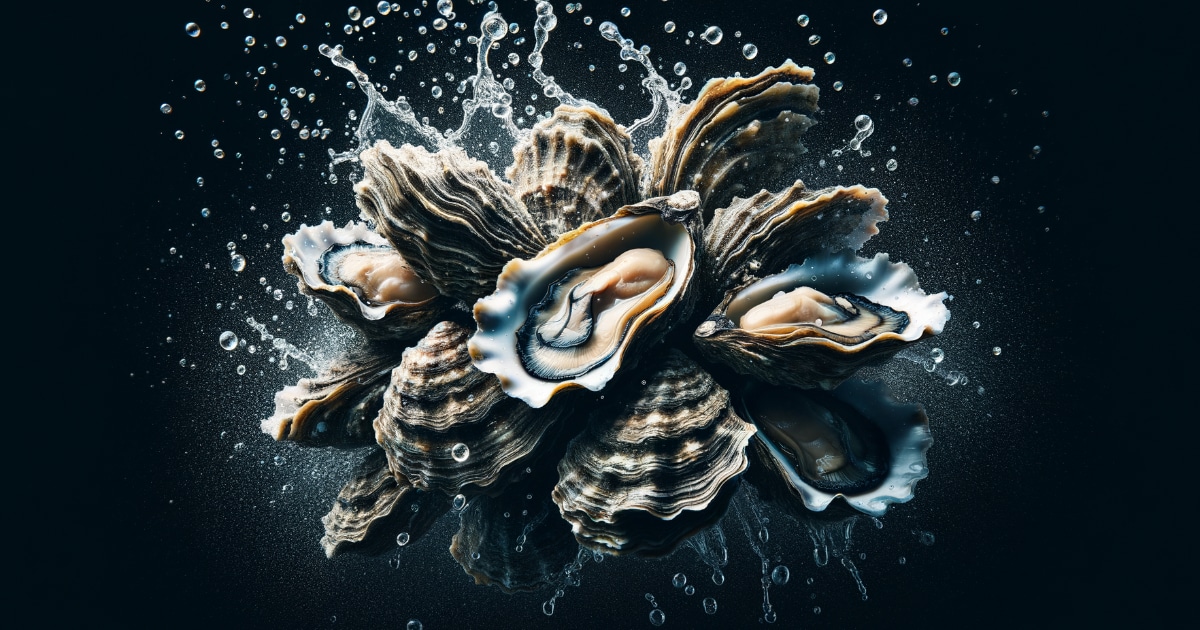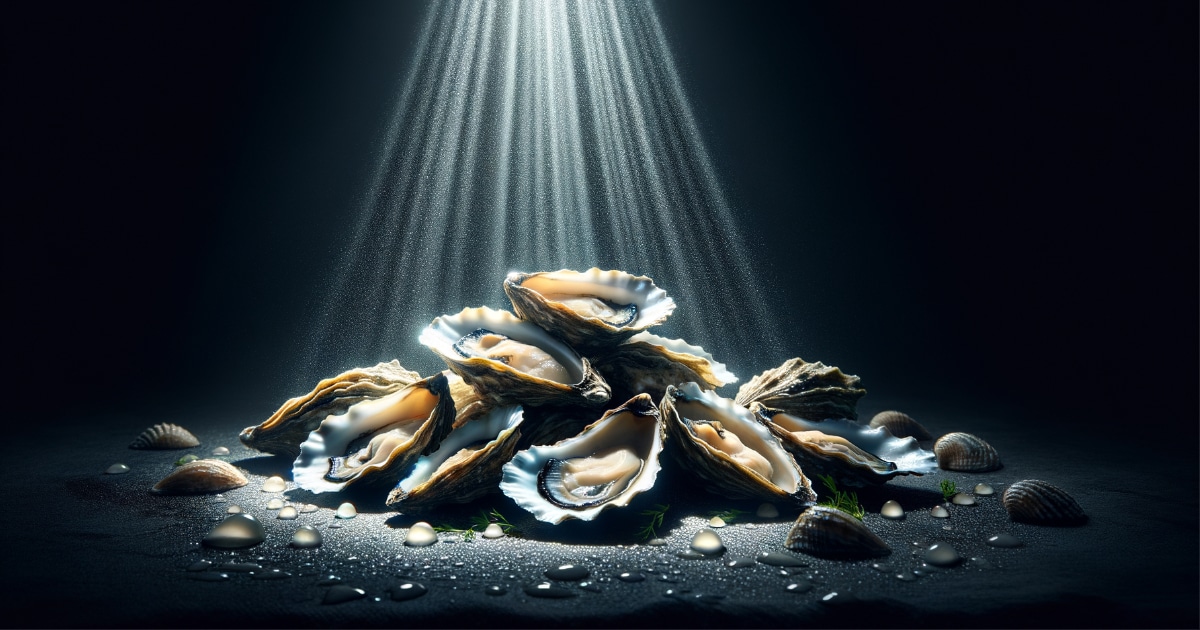Unveiling the Mysteries of Oyster Reproduction
How do oysters reproduce? This seemingly simple question opens up a fascinating window into the underwater lives of one of the world’s most intriguing shellfish. So, let’s dive in and explore the love life of these shelled creatures.
The Basic Reproductive Process
At their core, oysters are not unlike many creatures in the animal kingdom in that they follow a reproductive process essential for the continuation of their species. When we look closer, we discover that oysters have a unique method of procreation.
Nature’s Timing: Spawning
Oysters begin their reproductive dance when water temperatures rise, typically signaling the advent of spring or early summer. This temperature change flips an internal switch in the oysters, pushing them into what is known as the spawning phase.
How Do Oysters Reproduce: A Swarm of Gametes
During spawning, female oysters release millions of eggs into the water, while males contribute by expelling vast amounts of sperm. This cloud of potential life is known as gametes, and the goal is straightforward: sperm meets egg.
From Fertilization to Larvae
Once the eggs are fertilized, they start a remarkable transformation that is both stunning and vital for oyster proliferation.
Floating with Purpose
The fertilized oyster eggs, now called larvae, embark on a journey through the ocean currents. It’s a time of growth and survival, as these tiny particles of life float alongside plankton for about three weeks, developing and gaining strength.
Settling Down: A Key Stage In How Do Oysters Reproduce
As the larvae mature, they start seeking a place to call home. This settling is critical; the spot they choose will be where they spend the rest of their lives. This process is known as ‘setting,’ and it often involves attaching themselves to a hard surface, such as rocks, shells, or even other oysters.
The Transformation
Once settled, the larvae metamorphose into what we recognize as a juvenile oyster or a ‘spat.’ These tiny oysters will continue growing until they reach adulthood and can contribute to the reproductive cycle themselves.

Oysters’ Reproductive Strategies
Now, let’s get a little deeper and uncover the strategies oysters use to ensure their species thrive for generations.
The Numbers Game in How Do Oysters Reproduce
Oysters don’t put all their eggs in one basket—or in this case, one location. Their strategy is to release a staggering number of eggs and sperm, thus increasing the odds that at least some will survive. This numbers game is nature’s way of hedging bets against predators and environmental challenges.
Hermaphroditism: Oysters’ Ace in the Hole
Here’s an interesting curveball: some oyster species are what scientists call ‘sequential hermaphrodites.’ What does this mean? Simply put, they can change sex during their lifetime. This fascinating ability ensures that there’s always a mate available to produce offspring.
Storytime: How Do Oysters Reproduce
Imagine if you will, the sun is warming the coastal waters and our oyster friends below are bustling with excitement. It’s spawning time, and the water is about to get lively.
A Tale of an Oyster Colony
Nestled on a rocky coastline, a colony of oysters awaits the right signal. As the temperature hits the sweet spot, the once tranquil sea is now teeming with life. Egg meets sperm, and the next generation of oysters begins.
The Journey of a Lone Spat
Fast forward three weeks, and a single spat has settled on an old pirate coin wedged between stones. It’s the perfect place to grow, feeding on the rich plankton passing by. A real-life treasure, this oyster will live a life that many tales are spun from.
Delving Deeper: The Role of Environment in How Do Oysters Reproduce
Now that we’ve explored the basic mechanics behind how oysters reproduce, let’s examine how their environment impacts their reproductive success.
The Significance of Water Quality
Clean water is paramount to oysters for spawning and the survival of their larvae. Pollutants can disrupt this critical phase, leading to a decline in oyster populations. Oysters are also natural water filters, which means they help maintain the quality of their environment, creating a beneficial cycle for their reproduction.
Temperature and Salinity: The Delicate Balance
As we’ve mentioned, a rise in water temperature can trigger the spawning process, but what about salinity? Oysters require a certain salt content in the water to thrive. A shift too far in either direction—too fresh or too salty—can halt their reproductive cycle.

Human Intervention: Conservation and Aquaculture
In an age where natural oyster beds have diminished, humans play an essential role in the life cycle of these creatures.
Restoring the Reefs: Aiding How Do Oysters Reproduce
Efforts to restore oyster reefs involve careful consideration of location, environmental factors, and the health of existing marine life. By reconstructing these natural habitats, conservationists aim to give oysters a fighting chance at successful reproduction.
The Role of Aquaculture
Oyster farms have become an integral part of meeting the demands for these shellfish without depleting wild populations. These controlled environments allow for optimized conditions where oysters can reproduce and grow to maturity before being harvested.
The Future of Oyster Reproduction
As we peer into the horizon, the question of how oysters will continue to reproduce in changing climates and ecosystems remains top of mind.
Climate Change: Impacting How Do Oysters Reproduce
Rising temperatures and more acidic oceans due to climate change could pose new challenges to oyster reproduction. Scientists and farmers alike are studying and adapting to these changes, ensuring that oysters can continue their life cycle amid these global shifts.
A Ripple Effect
It’s essential to realize that the story of how oysters reproduce is not just a standalone tale. It’s interwoven with marine ecosystems, human dining habits, and the global environment. The fate of these bivalves affects us all, from the health of our oceans to the future of sustainable seafood.
Celebrating the Journey
Understanding how oysters reproduce allows us to appreciate the delicate and awe-inspiring nature of marine life. It also underscores our responsibility to protect and preserve the environment that these creatures and many others call home.
Closing Thoughts: A World Beneath the Waves
The story of oyster reproduction is a testament to the resilience and complexity of marine life. From the mystical spawning event to the hardy survival of the oyster spat, each step of the way is filled with wonder and ecological significance.
By safeguarding the waters, supporting sustainable practices, and fostering a harmonious relationship with the ocean, we ensure that the cycle of life for these extraordinary shellfish continues for generations to come.
So next time you encounter an oyster, remember the marvelous journey it has taken and the intricate dance of life that it performs beneath the waves. How do oysters reproduce? They do it with remarkable intricacy and the silent orchestration of nature’s will, creating a narrative as deep and enduring as the sea itself.
FAQs About Oyster Reproduction
- How Do Oysters Reproduce?
- Oysters reproduce through a process called spawning, where females release eggs and males release sperm into the water. Fertilization occurs externally in the surrounding water.
- What Triggers Oysters to Start Reproducing?
- The reproductive process in oysters is typically triggered by a rise in water temperature, usually during spring or early summer.
- How Many Eggs Can an Oyster Produce?
- Female oysters can release millions of eggs during the spawning season.
- What Happens After Oyster Eggs Are Fertilized?
- Once fertilized, the eggs develop into larvae, which float in the ocean currents for about three weeks before settling down and attaching to a hard surface.
- Where Do Oyster Larvae Settle?
- Oyster larvae often settle on hard surfaces such as rocks, shells, or even other oysters.
- What Is Unique About Some Oyster Species’ Reproduction?
- Some oyster species are sequential hermaphrodites, meaning they can change sex during their lifetime, which ensures there is always a mate available for reproduction.
- How Does Water Quality Affect Oyster Reproduction?
- Clean water is crucial for successful oyster spawning and larval survival. Pollutants in the water can disrupt these phases and lead to population decline.
- How Does Climate Change Impact Oyster Reproduction?
- Climate change, leading to rising temperatures and more acidic oceans, poses challenges to oyster reproduction, affecting spawning, larval survival, and habitat suitability.
- What Role Do Humans Play in Oyster Reproduction?
- Humans contribute through conservation efforts like reef restoration and sustainable aquaculture practices, which help maintain and support healthy oyster populations.
- Why Is Understanding Oyster Reproduction Important?
- Knowledge about oyster reproduction is crucial for conservation efforts, sustainable seafood practices, and maintaining healthy marine ecosystems.
These FAQs provide a quick and informative overview of the key points discussed in your blog post on oyster reproduction.
References
- “Oyster reproduction is compromised by acidification experienced seasonally in coastal regions” – This article from Scientific Reports discusses how environmental factors like seasonal acidification in coastal regions can impact oyster reproduction. It’s a valuable resource for understanding the challenges faced by oysters in changing environmental conditions. Read more at Scientific Reports
- “(PDF) Reproductive Biology of Pacific Oyster (Crassostrea gigas)” – This research focuses on the reproductive biology of Pacific oysters in the coastal area of Banda Aceh City, Aceh Province, Indonesia, and was conducted over six months. Link to ResearchGate
- “Reproductive effort of Pacific oysters: A trait associated with susceptibility to summer mortality” – This article from ScienceDirect discusses the relationship between the reproductive effort of Pacific oysters and their susceptibility to summer mortality. Link to ScienceDirect
- “Examination of the effects of inbreeding on reproductive capacity in Pacific oysters (Crassostrea gigas)” – Another study from ScienceDirect that examines how inbreeding affects the reproductive capacity of Pacific oysters. Link to ScienceDirect
These references can provide a comprehensive understanding of various biological and environmental factors influencing marine life, including oysters.
Explore More From T.L. Morris Seafood
If you enjoyed this post, you’re in for a treat! Dive deeper into seafood with some of my other articles that readers have loved:
- All About Oyster Anatomy: What Lies Beneath the Shell– Explore the intricacies of oyster anatomy. Dive into the hidden world beneath the shell. Discover nature’s architectural marvel. Learn about oyster anatomy now.
- Unlock the Mystique of Fresh Oysters: An Enchanting Adventure– Delve into the allure of fresh oysters: uncover shucking techniques, taste journeys, and ideal pairings in our insightful guide.
- Are Oysters Good for You? The Comprehensive Guide– Discover the health benefits of oysters in our latest article: Are oysters good for you? Dive into the facts now!
Stay connected and keep exploring! Don’t forget to subscribe for the latest updates and insights.

